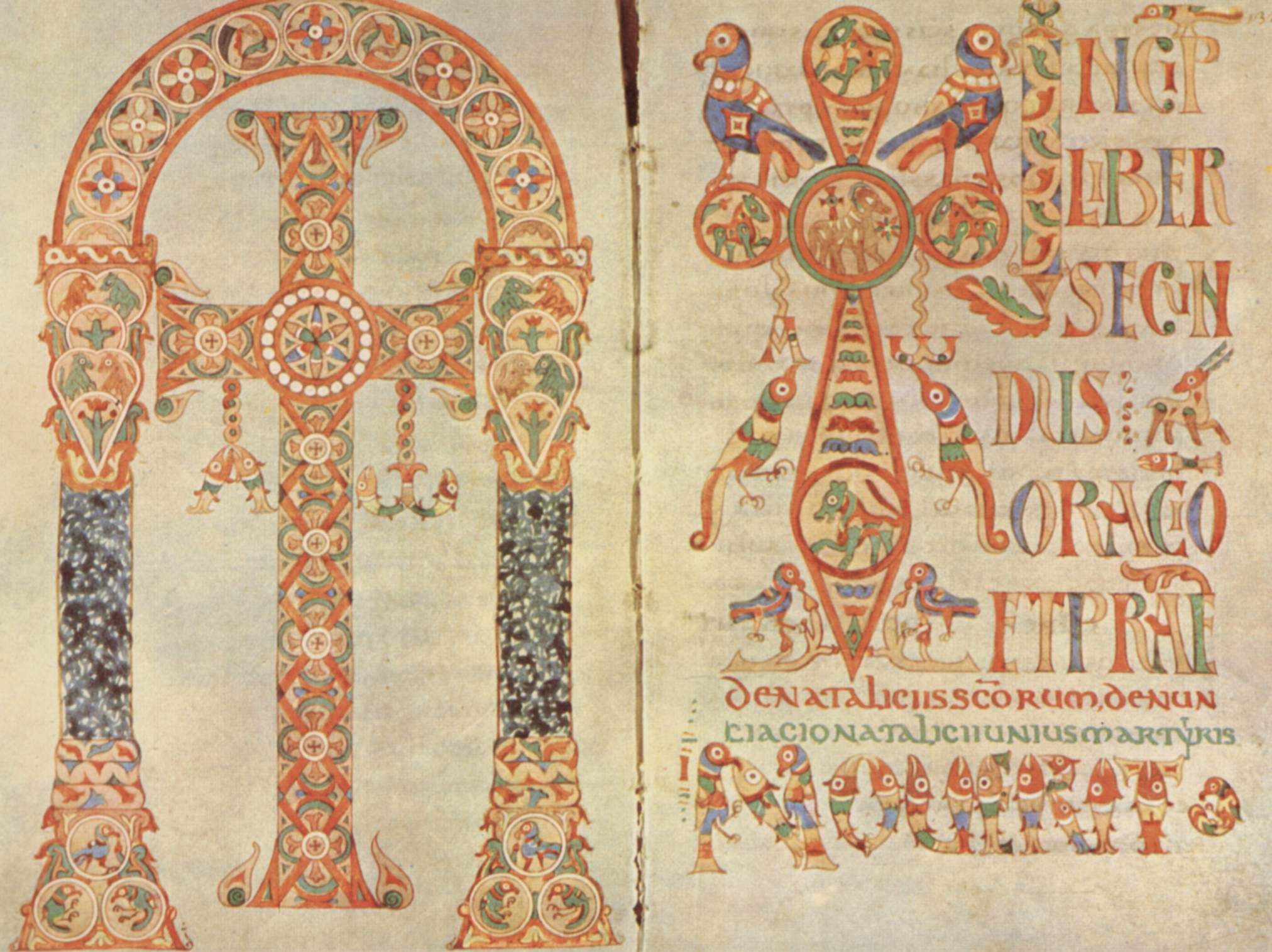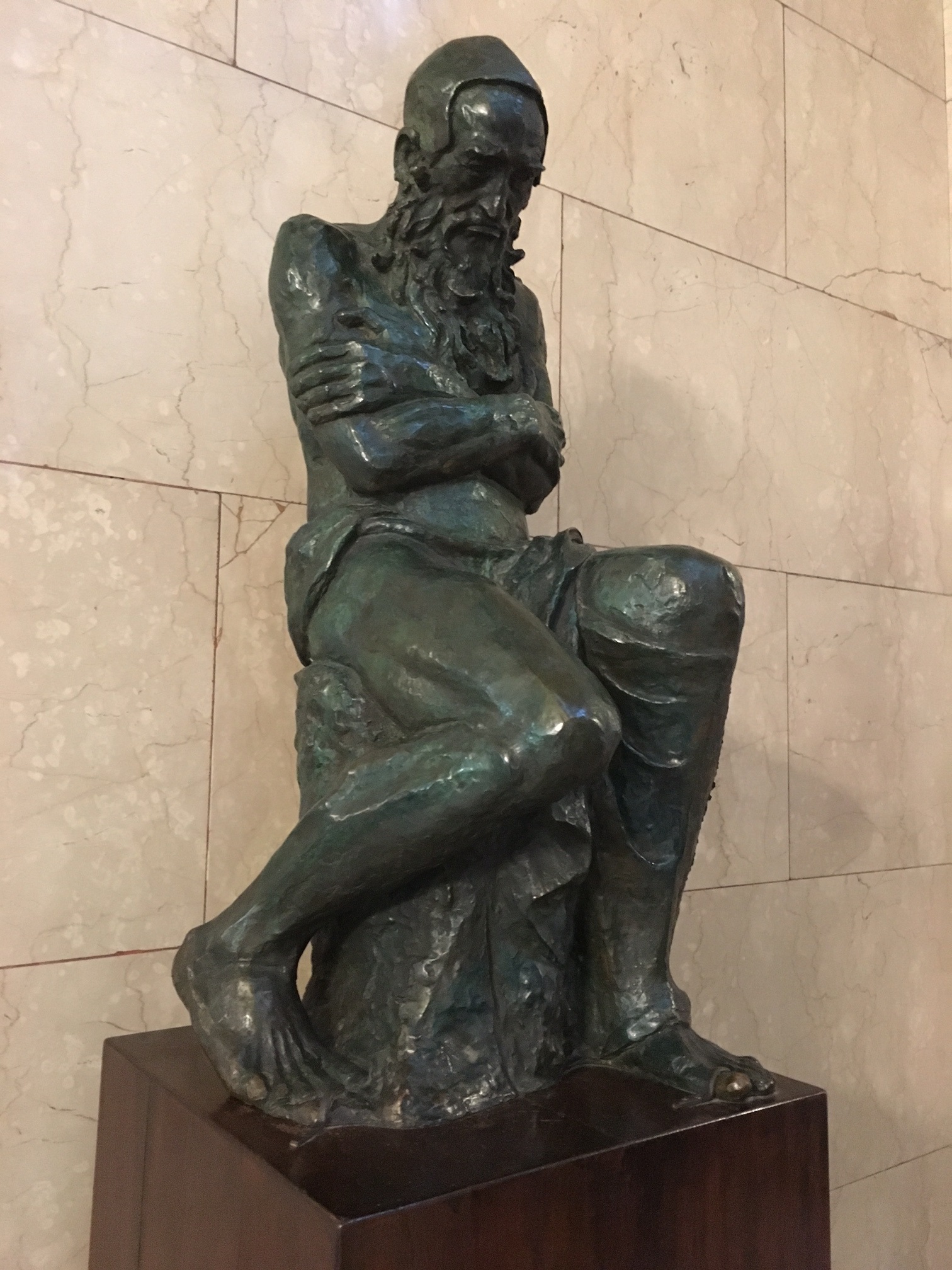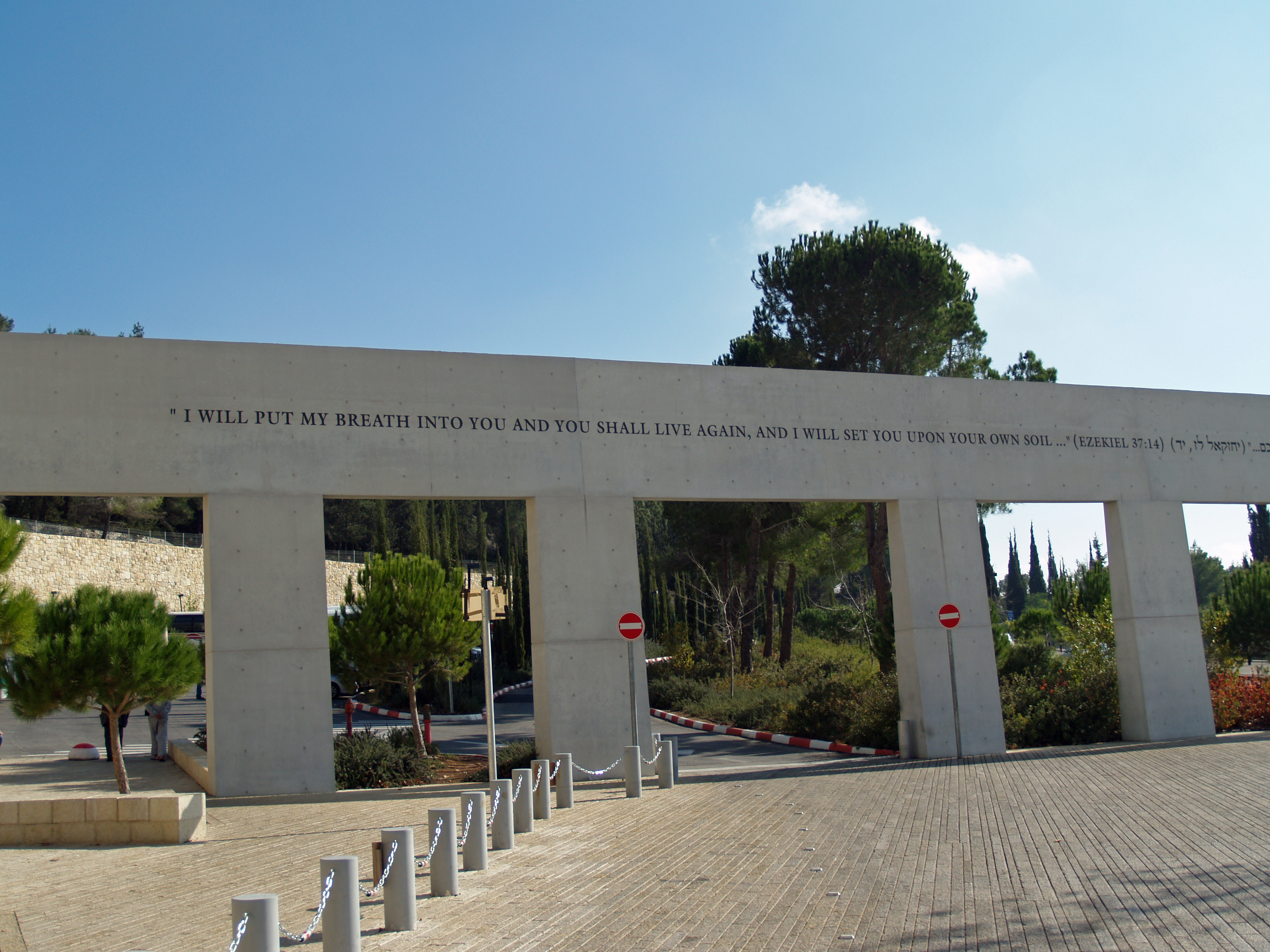|
Sélestat Lectionary
The Sélestat Lectionary is a Merovingian illuminated manuscript dating to around 700. It contains part of the texts from a lectionary and is the oldest manuscript in Alsace in France. It is held in the Humanist Library of Sélestat. Written in semi-uncial, it contains 59 texts for Mass, of which 45 are drawn from the Old Testament books of Isaiah, Jeremiah and Ezekiel and 19 from the Acts of the Apostles. It concludes with an apocryphal chronicle of Jerome. It only contains ornamental initials and occasionally an ornamented title. Bibliography * Munier, Charles : « Le lectionnaire de Sélestat ». in : ''Annuaire 1993 des amis de la bibliothèque humaniste de Sélestat'', p. 7- 22. * Adam, Paul : « Catalogue sommaire des Manuscrits de la bibliothèque humaniste de Sélestat ». in : ''L'Humanisme à Sélestat'', Sélestat : Alsatia, 978 chapter IV, p. 100. * Lowe, E. A. : ''Codices Latini Antiquiores ''Codices Latini Antiquiores'' ("The More Ancient Latin language ... [...More Info...] [...Related Items...] OR: [Wikipedia] [Google] [Baidu] |
Merovingian Illuminated Manuscript
Merovingian illumination is the term for the continental Franks, Frankish style of illuminated manuscript, illumination in the late seventh and eight centuries, named for the Merovingian dynasty. Ornamental in form, the style consists of initials constructed from lines and circles based on Late Antique illumination, title pages with arcade (architecture), arcades and crucifixes. Figural images were almost totally absent. From the eight century, zoomorphic decoration began to appear and become so dominant that in some manuscripts from Chelles Abbey, Chelles whole pages are made up of letters formed from animals. Unlike the contemporary Insular illumination with its rampant decoration, the Merovingian style aims for a clean page. One of the oldest and most productive scriptoria was Luxeuil Abbey, founded by the Irish monk Columbanus in 590 and destroyed in 732. Corbie Abbey, founded in 662, developed its own version of the style, while Chelles and Laon were further centres. From th ... [...More Info...] [...Related Items...] OR: [Wikipedia] [Google] [Baidu] |
Lectionary
A lectionary () is a book or listing that contains a collection of scripture readings appointed for Christianity, Christian or Judaism, Jewish worship on a given day or occasion. There are sub-types such as a "gospel lectionary" or evangeliary, and an :wikt:epistolary, epistolary with the readings from the New Testament Epistles. History By the Medieval era the Jewish community had a Weekly Torah portion, standardized schedule of scripture readings from both the Torah and the prophets to be read in the synagogue. A sequential selection was read from the Torah, followed by the "haftarah" – a selection from the prophetic books or historical narratives (e.g. "Judges", "Kings", etc.) closely linked to the selection from the Torah. Jesus may have read a providentially "random" reading when he read from Isaiah 61:1–Isaiah 61:2, 2, as recorded in Luke 4:16–21, when he inaugurated his public ministry. The early Christians adopted the Jewish custom of reading extracts from the Old T ... [...More Info...] [...Related Items...] OR: [Wikipedia] [Google] [Baidu] |
Alsace
Alsace (, ; ) is a cultural region and a territorial collectivity in the Grand Est administrative region of northeastern France, on the west bank of the upper Rhine, next to Germany and Switzerland. In January 2021, it had a population of 1,919,745. Alsatian culture is characterized by a blend of German and French influences. Until 1871, Alsace included the area now known as the Territoire de Belfort, which formed its southernmost part. From 1982 to 2016, Alsace was the smallest administrative in metropolitan France, consisting of the Bas-Rhin and Haut-Rhin Departments of France, departments. Territorial reform passed by the French Parliament in 2014 resulted in the merger of the Alsace administrative region with Champagne-Ardenne and Lorraine to form Grand Est. On 1 January 2021, the departments of Bas-Rhin and Haut-Rhin merged into the new European Collectivity of Alsace but remained part of the region Grand Est. Alsatian dialect, Alsatian is an Alemannic German, Alemannic ... [...More Info...] [...Related Items...] OR: [Wikipedia] [Google] [Baidu] |
Humanist Library Of Sélestat
The Humanist Library in Sélestat is one of the most important cultural treasures of Alsace, France. There are two Renaissance humanist libraries involved, the library of the Humanist School and the private library of the scholar, Beatus Rhenanus (1485–1547). The Library of the Humanist School In 1441, the municipal authorities of Sélestat – then a free city of the Holy Roman Empire – appointed Ludwig Dringenberg, born in Westphalia, to be the leader of the local Latin school. Under his leadership the school fostered Humanist thinking. His successors. Were Kraft Hofman (1477–1501), Hieronymus Gebwiler (1501–1509) and Hans Sapidus (1510–1525). The school also had a library. Notable alumni * Bonifacius Amerbach * Beatus Rhenanus The Library of Beatus Rhenanus Beatus Rhenanus bequeathed his entire private library to his home city of Sélestat. This library contained about 670 bound leather volumes at the time of his death in 1547, which Rhenanus had collected du ... [...More Info...] [...Related Items...] OR: [Wikipedia] [Google] [Baidu] |
Semi-uncial
Uncial is a majuscule script (styles of handwriting), script (written entirely in capital letters) commonly used from the 4th to 8th centuries AD by Latin and Byzantine Empire, Greek scribes. Uncial letters were used to write Greek language, Greek and Latin, as well as Gothic language, Gothic, and are the current style for Coptic language, Coptic and Nobiin language, Nobiin. Development Early uncial script most likely developed from late rustic capitals. Early forms are characterized by broad single-stroke Letter (alphabet), letters using simple round forms taking advantage of the new parchment and vellum parchment, vellum surfaces, as opposed to the angular, multiple-stroke letters, which are more suited for rougher surfaces, such as papyrus. In the oldest examples of uncial, such as the fragment of ''Papyrus Oxyrhynchus 30, De bellis macedonicis'' in the British Library, of the late 1st–early 2nd centuries, all of the letters are disconnected from one another, and word separ ... [...More Info...] [...Related Items...] OR: [Wikipedia] [Google] [Baidu] |
Mass (liturgy)
Mass is the main Eucharistic liturgical service in many forms of Western Christianity. The term ''Mass'' is commonly used in the Catholic Church, Western Rite Orthodoxy, Old Catholicism, and Independent Catholicism. The term is also used in many Lutheran churches, as well as in some Anglican churches, and on rare occasion by other Protestant churches. Other Christian denominations may employ terms such as '' Divine Service'' or '' worship service'' (and often just "service"), rather than the word ''Mass''. For the celebration of the Eucharist in Eastern Christianity, including Eastern Catholic Churches, other terms such as ''Divine Liturgy'', ''Holy Qurbana'', ''Holy Qurobo'' and ''Badarak'' (or ''Patarag'') are typically used instead. Etymology The English noun ''Mass'' is derived from the Middle Latin . The Latin word was adopted in Old English as (via a Vulgar Latin form ), and was sometimes glossed as ''sendnes'' (i.e. 'a sending, dismission'). The Latin term itself w ... [...More Info...] [...Related Items...] OR: [Wikipedia] [Google] [Baidu] |
Isaiah
Isaiah ( or ; , ''Yəšaʿyāhū'', "Yahweh is salvation"; also known as Isaias or Esaias from ) was the 8th-century BC Israelite prophet after whom the Book of Isaiah is named. The text of the Book of Isaiah refers to Isaiah as "the prophet", but the exact relationship between the Book of Isaiah and the actual prophet Isaiah is complicated. The traditional view is that all 66 chapters of the book of Isaiah were written by one man, Isaiah, possibly in two periods between 740 BC and 686 BC, separated by approximately 15 years. Another widely held view suggests that parts of the first half of the book (chapters 1–39) originated with the historical prophet, interspersed with prose commentaries written in the time of King Josiah 100 years later, and that the remainder of the book dates from immediately before and immediately after the end of the 6th-century BC exile in Babylon (almost two centuries after the time of the historical prophet), and that perhaps these later cha ... [...More Info...] [...Related Items...] OR: [Wikipedia] [Google] [Baidu] |
Jeremiah
Jeremiah ( – ), also called Jeremias, was one of the major prophets of the Hebrew Bible. According to Jewish tradition, Jeremiah authored the Book of Jeremiah, book that bears his name, the Books of Kings, and the Book of Lamentations, with the assistance and under the editorship of Baruch ben Neriah, his scribe and disciple. According to the narrative of the Book of Jeremiah, the prophet emerged as a significant figure in the Kingdom of Judah in the late 7th and early 6th centuries BC. Born into a Kohen, priestly lineage, Jeremiah reluctantly accepted his religious calling, call to prophethood, embarking on a tumultuous ministry more than five decades long. His life was marked by opposition, imprisonment, and personal struggles, according to Jeremiah 32 and Jeremiah 37, 37. Central to Jeremiah's message were Bible prophecy, prophecies of impending divine judgment, forewarning of the nation's idolatry, social injustices, and moral decay. According to the Bible, he prophesied t ... [...More Info...] [...Related Items...] OR: [Wikipedia] [Google] [Baidu] |
Ezekiel
Ezekiel, also spelled Ezechiel (; ; ), was an Israelite priest. The Book of Ezekiel, relating his visions and acts, is named after him. The Abrahamic religions acknowledge Ezekiel as a prophet. According to the narrative, Ezekiel prophesied the destruction of Judah's capital city Jerusalem. In 587 BC, the Neo-Babylonian Empire conquered Jerusalem, destroyed Solomon's Temple, and sent the Judahite upper classes into the Babylonian captivity. However, Ezekiel also prophesied the eventual restoration of the Jewish people to the Land of Israel. It is believed he died around 570 BC; Ezekiel's Tomb is a Jewish religious site in Mesopotamia. Three decades later, in 539 BC, the Persian empire conquered Babylon and the Edict of Cyrus repatriated the exiles. The name "Ezekiel" means "God is strong" or "God strengthens" in Hebrew. Biblical account The author of the Book of Ezekiel presents himself as Ezekiel, the son of Buzi, born into a priestly ( kohen) lineage. The aut ... [...More Info...] [...Related Items...] OR: [Wikipedia] [Google] [Baidu] |
Acts Of The Apostles
The Acts of the Apostles (, ''Práxeis Apostólōn''; ) is the fifth book of the New Testament; it tells of the founding of the Christian Church and the spread of The gospel, its message to the Roman Empire. Acts and the Gospel of Luke make up a two-part work, Luke–Acts, by the same anonymous author. Traditionally, the author is believed to be Luke the Evangelist, a doctor who travelled with Paul the Apostle. It is usually dated to around 80–90 AD, although some scholars suggest 110–120 AD.Tyson, Joseph B., (April 2011)"When and Why Was the Acts of the Apostles Written?" in: The Bible and Interpretation: "...A growing number of scholars prefer a late date for the composition of Acts, i.e., c. 110–120 CE. Three factors support such a date. First, Acts seems to be unknown before the last half of the second century. Second, compelling arguments can be made that the author of Acts was acquainted with some materials written by Josephus, who completed his Antiquities of the J ... [...More Info...] [...Related Items...] OR: [Wikipedia] [Google] [Baidu] |
Jerome
Jerome (; ; ; – 30 September 420), also known as Jerome of Stridon, was an early Christian presbyter, priest, Confessor of the Faith, confessor, theologian, translator, and historian; he is commonly known as Saint Jerome. He is best known for his translation of the Bible into Latin (the translation that became known as the Vulgate) and his commentaries on the whole Bible. Jerome attempted to create a translation of the Old Testament based on a Hebrew version, rather than the Septuagint, as Vetus Latina, prior Latin Bible translations had done. His list of writings is extensive. In addition to his biblical works, he wrote polemical and historical essays, always from a theologian's perspective. Jerome was known for his teachings on Christian moral life, especially those in cosmopolitan centers such as Rome. He often focused on women's lives and identified how a woman devoted to Jesus should live her life. This focus stemmed from his close patron relationships with several pro ... [...More Info...] [...Related Items...] OR: [Wikipedia] [Google] [Baidu] |











